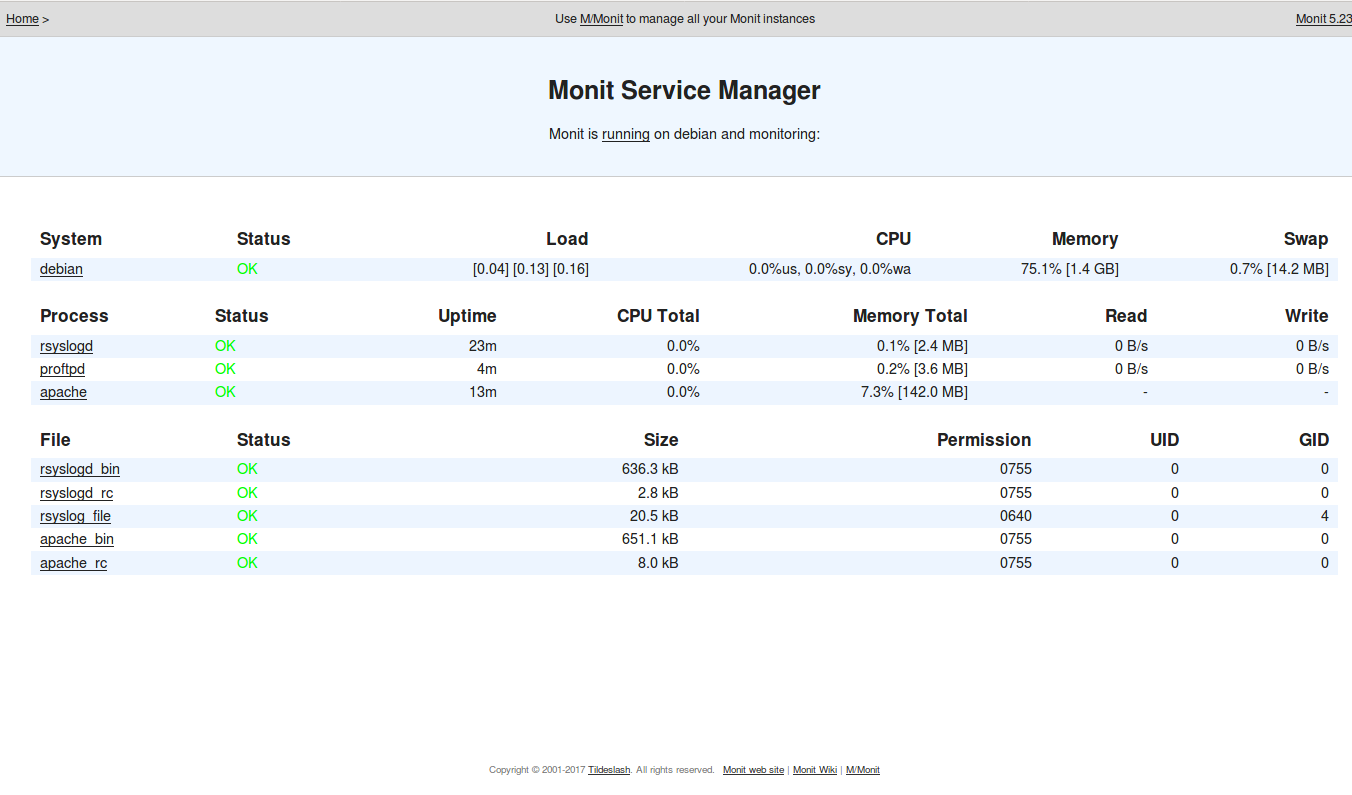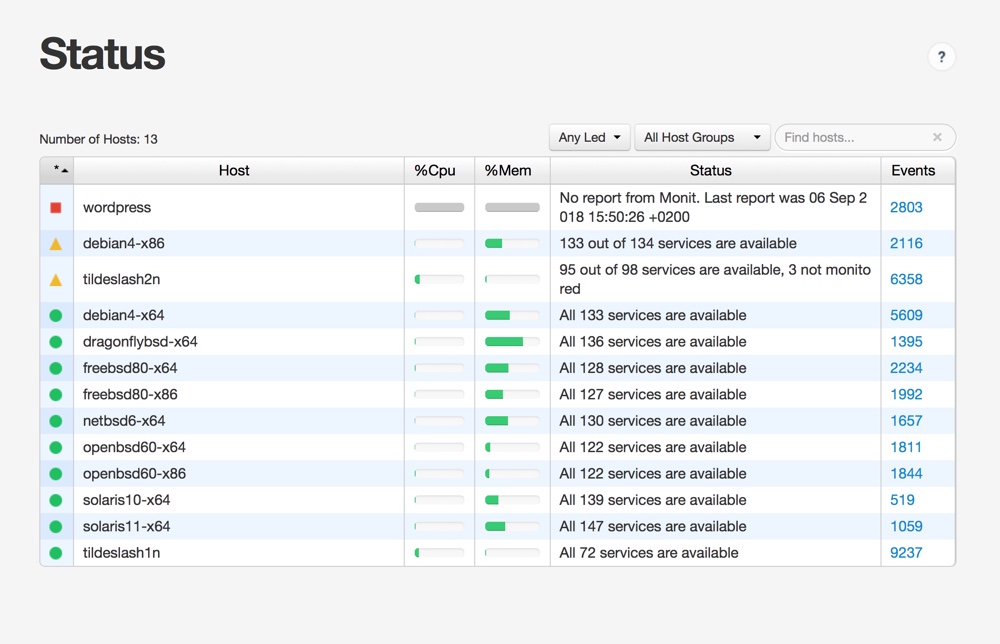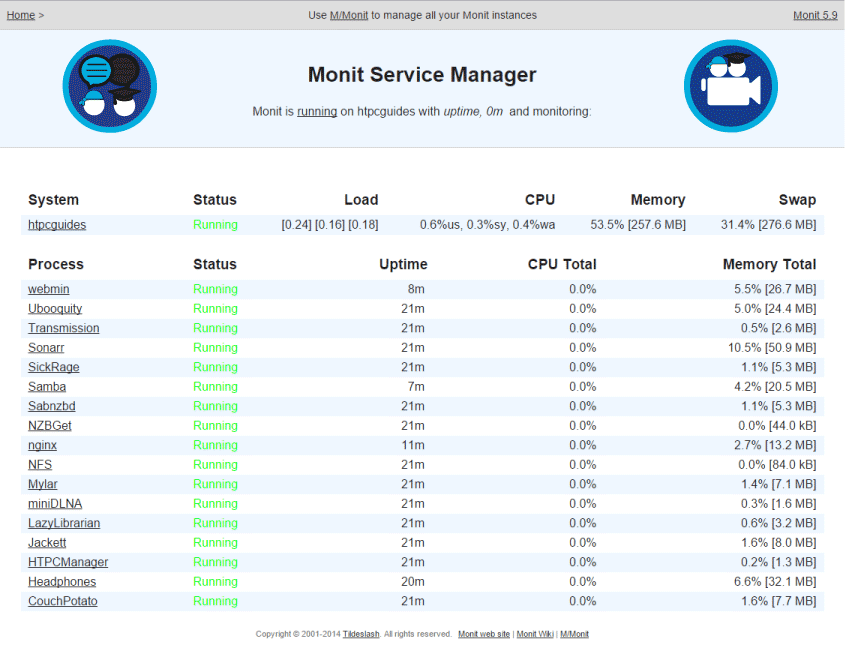Monit is available for most Linux distribution. With the following command you install monit on a Ubuntu / Debian machine: user@machine:$ sudo apt-get update && sudo apt-get install monit. Or if you’re an openSUSE user, you can install monit like this: user@machine:$ sudo zypper ref && sudo zypper in monit. After 3 months, non-customers can continue to leverage Monit if they become an Eastern Bank business customer. Otherwise, the business should contact Monit to learn about other ways to access. Monit is offered through Signal Financial Technologies. Signal is a third-party service provider and not an affiliate of Eastern Bank.
INCIDENT MANAGER
Real time information gathered from multiple sources and systems is key to keeping your parking operations run smoothly. System or apparatus downtime means such information is not available 24/7.
That’s why Monit developed Incident Manager. Minimize downtime and maximize your revenues: Incident Manager sends alerts or warnings to the right man in the right place. So that your systems stay up and running.
Minimize downtime
Incident Manager is an online multi-platform tool that provides centralized operation and control of your systems. You benefit from real-time hands-on control thanks to the inter-connectivity between car park facilities, systems and suppliers. Set up the system so that the right person gets the right information, system access or editing rights. Alert notifications, warnings and fast analytics and status reports are generated immediately. Streamline communications when you use Incident Manager as a communication platform between operators, service departments and car park assistants.
Besides Nagios, Icinga and check_mk there are some other, more slimmer tools to monitor servers. Especially if you are a private person and you want to monitor your vServer, Raspberry Pi or whatever, you may want to use a smaller and easier monitoring solution than those big three.
This article is about monit. Monit is one of these simple monitoring tool. But just because the configuration is more simple, that doesn’t mean hat you are limited in the ways you monitor your servers with Monit.
How does monit works? And why not just use Nagios?
monit works differently than Nagios or Icinga. While Nagios, Icinga and check_mk needs a monitoring server which connects in given time periods to the machines it checks, monit doesn’t need this kind of server in order to do these checks. So basically that means that wherever you install monit, it checks locally and reports the results via mail.
In the first moment this sounds like a disadvantage whether it be due to reliability or security, but think about it for a second: What does Nagios, Icinga or check_mk basically do? They ping the destination machine and if this ping is successful it opens up an NRPE or SSH connection and executes the given CPU, Ram, service checks and so on, locally. The console output is then used for analysis. If the check exceeds it’s given limit, Nagios / Iciniga / check_mk creates an E-Mail and send it to the user /group of users which is / are responsible for this service. So basically the server executes local commands like monit. The initiator however is not locally, it’s a different (remote) server.
You now may think „but how do I even test if the server is available?“. Well, you just setup another monit instance which is checking if the destination is pingable, just like with Nagios / Icinga / check_mk.
A real benefit for monit is it’s easy configuration and syntax. While you have to dig through a bunch of files in order to create a simple check in Nagios, monit allows you to simply put one (human readable) configuration file in the correct directory and the check is ready to use. In combination with a configuration management like Ansible (I’ve already created an article about Ansible a long time ago) you have an easy central to use monitoring tool with automatically distributed configuration files.



Installation of monit
Monit is available for most Linux distribution. With the following command you install monit on a Ubuntu / Debian machine:
Or if you’re an openSUSE user, you can install monit like this:
That’s basically it. Compared to Nagios or Icinga, you don’t need an installed Apache web server. Monit comes with it’s own built-in web service. In order to check if monit is running, you can use systemctl to do so:
In order to start, stop or restart the service, use these following commands:
Enable the monit built-in web server
If you’re an Debian / Ubuntu user, monit will store it’s main configuration under /etc/monit/monitrc. This files is really well documented. However, I want to give a short brief about how to enable the built-in web server which is one of the most important features.
You can find the following block (at the time of writing) at line 155:
If you uncomment this section the built-in monit web server will be started and will listen on port 2812. The second line sets the network address where the web server instance is listening on. If it only listens on localhost you will not be able to connect from any other host. For e.g. if your server has the IP address 192.168.0.2 you can replace localhost with this IP address. This will get the monit built-in web server to listen on this network interface.
The third line regulates which other hosts are allowed to establish a connection to the web server. You can define single IP addresses or even whole subnets (like 192.168.1.0/24). Just like before, simply replace localhost with the IP address or subnet which you want to allow to connect to the web server.
The fourth line defines a user with a password which will be able to login. monit does not allow an anonymous login which is good from a security point of view obviously. In this example the username would be admin with the password monit.
When you’re done setting these lines, restart the monit service:
Monitoring Report Digital Economy 2018
You can now visit the monit web interface of your server. In this example the address would be something like http://192.168.0.2:2812 or just use the FQDN: http://my.monit.fqdn:2812.
Besides using the web interface, you can also check your services on the command line. To do so you also have to have the web interface enabled, because the command line simply gets an HTTP output and process it. To get a summary of all your monitored processes you can enter the following command:
Enable mail notifications
Nagios or Icinga can send you a mail every time when a host or a service of this host went down. monit also offers this feature. To enable mail notifications, open once more the monit configuration file (/etc/monit/monitrc) and search for the following lines:
As you can see, you can set multiple mail servers which monit should try to connect each time a notification is about to be send. The downside here is that monit does not support authentication against mail servers. This basically means that you can’t just enter public mail servers like GMail. If you want to use those service you have to have a local mail server setup. You can configure the mailserver as a satellite / client to keep it more simple. If you’re mail server is up and running, you can simply set the mail server in the monitrc file like this:
If you have access to a mail server which doesn’t require authentication, you can replace localhost with this mail server of course.
Now that you’ve set the mail server, you also have to enter the recipient for the notification mails. Search for the following line in the monitrc file:
Uncomment this line and replace sysadm@foo.bar with the recipient of your choice. You can also define which kind of notification are going to be send to this mail address. However, this is more advanced configuration which would burst this articles length.
When everything set, restart monit and you will now get a mail each time a service status changes:
Some examples for monitoring services
For monitoring new programs or services, you have to create a new file under the subdirectory /etc/monit/monitrc.d/. Simply name this file like the service which is going to be monitored. The following examples are showing how to monitor services, programs and system resources with monit:
Monitoring a running program / service or service without a PID file
In this example we simple check if a process called „ts3“ is running on the machine. You can use ps ax on the command line by yourself on the target machine to see if the process is running. That’s basically what monit is doing. The name of this check is TeamSpeak as seen in the first line. You can change this to whatever you want.
Monitor Dolar
Monitoring a program / service with a PID file
In this specific example we monitor a MySQL instance installed on the system. If the service crashes, monit tries three times within four cycles to restart the service. For this restart monit uses the two defined commands which are defined in start program and stop program. In this case monit checks the unixsocket as well as a network connection to get in touch with MySQL before it trys to restart the service.
If after four cycles (which includes restarting the service after each cycle in this case) the service is still unreachable for monit, monit runs into the fifth cycle. This last cycle is defined with „alert“. The administrator, which has been declared in the monitrc file, will get a mail. If there is another competent person defined for this specific service, this person will be mailed as well. The name of the service in this example is mysqld.

Check for disk usage
With this check, we check the root file system. If the used space in percentage is over 90, monit will send out an alert via mail. It would also be possible to check against the used inodes of a partition as well. If you have more than just one partition, you have to create a check for each partition of want to monitor.
Check for ram, swap and CPU usage

In this example we check the memory, CPU and swap usage by the system. This example is similar to the disk usage. If the memory usage is higher than 90% of the overall memory of this system, monit will send out an alert. If the CPU usage is over 90% for four cycles, monit will send an alert as well. The four cycles ensure that monit is not starting to report every little peak a CPU has. Same goes to SWAP. If 95% of the overall SWAP is in use, monit will report this when this has happened four times / cycles in a row. In the first line you would have to change my.machine.fqdn to the real FQDN your system has.
Check an external host (ping)
With this check, monit tries to ping the specified other.host.fqdn. With every ping command monit starts, it does three pings with a timeout of five seconds for each. If the ping fails two times within a three times cycle, monit sends out an alert that the host is unreachable / offline. In order to get this command up and running, you have to change other.host.fqdn to the desired host which you want to check.
For every check you change, add or remove, you have to restart the monit service:
You can now see the status of the services with the help of the web interface or with the command line:
If you want to get the status of one single check, you can append the name of the check at the end of the status command. You have to use the name you defined within the configuration file for this check in your command. For e.g. to get the status of the first check TeamSpeak we’ve configured in these examples:
mmonit: If you need a central web instance
So while monit offers a web interface which you can use in order to get an overview about the actual checked services, I understand that literally nobody wants to connect to each single monit web instance if you have 30 hosts or more.
Now, what you could do is to write a wrapper script (with bash, Python, etc.) which helps you to get the actual status of all services on all hosts. However, a more comfortable and easier solution is to use mmonit. mmonit is written by the official monit developers and gathers all information from each single monit instance and is showing the collected data on one single page.
Sadly, mmonit isn’t free. You can grab a 30 day trial if you want to, but at the end you have to pay a small one time fee in order to use the software. The prices are starting as low as 65 € for 5 hosts and is dropping sharply as more hosts you’re using. With 50 hosts you also get support for just 349 €. Again, this is a one-time pay license. There are no more additional costs coming up. If you compare this to other solutions like check_mk, mmonit is really cheap.
Sadly, I’m unable to tell you more about mmonit for now. I wasn’t in the need to have to use it for now. My own wrapper script is doing more than just fine. Right now I’m monitoring +30 hosts with monit. But maybe the future will push me to get a mmonit license 😉
Final words
Monitor Definition
Is monit a full replacement for Nagios or Icinga? I’m unable to say if monit really fits into server farms with more than 100 servers. But if you want to have a easy monitoring solution which works with scripts (and Nagios plugins if you configure your checks correctly), you will be most likely happy with monit.
I’ve seen some talks recently on StackOverflow about monit and while a lot of people are saying that they wouldn’t use monit in bigger clusters, they use it on certain spots. For e.g. somebody talked about a customer with round about 20 servers. He rolled out monit there because of the fast and easy configuration. In order to check all 20 hosts at once, he created a bash script which connects via SSH and Public Key authentication to each host and issues the command monit status. In order to keep track if the host is still accessible from outside he just pings from another host with a ping check configured on another monit instance.
As you can see, even if monit looks like it’s limited or „not as powerful as Nagios“, there are no borders. A lot of people use and love monit due to it’s easy configuration and flexibility. If you’re looking for a monitoring solution or for an Nagios / Icinga alternative, you should give monit a try.
Last hint: If you want to monitor a single server (for e.g. home server or a Raspberry Pi) monit is would you should look up before Nagios or Icinga IMHO. In a setup like this, monit is definitely about to shine.
Moniter
Further links
